156 SACD / Guillaume Bouzignac: Motets
Guillaume Bouzignac
Motets · Motetten
Sächsisches Vocalensemble, Matthias Jung
TACET Real Surround Sound & Stereo
EAN/barcode: 4009850015642
![]()
![]()
Description
"… A frisson of delight and exhilaration…" (Sächsische Zeitung)
"(…)The music itself is, in a word, wonderful. The melodies, avoiding the normal churchly style of the time, and seemingly incorporating what sounds like a heavily-influenced folk idiom, are tuneful and highly dramatic. His use of the chorus, from large antiphonal responses to unequally balanced ensembles, to superb solo combinations, is thrilling and highly effective…" (Audiophile Audition)"
13 reviews for 156 SACD / Guillaume Bouzignac: Motets
You must be logged in to post a review.
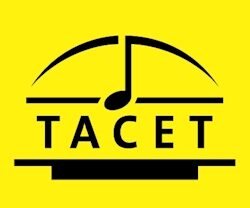
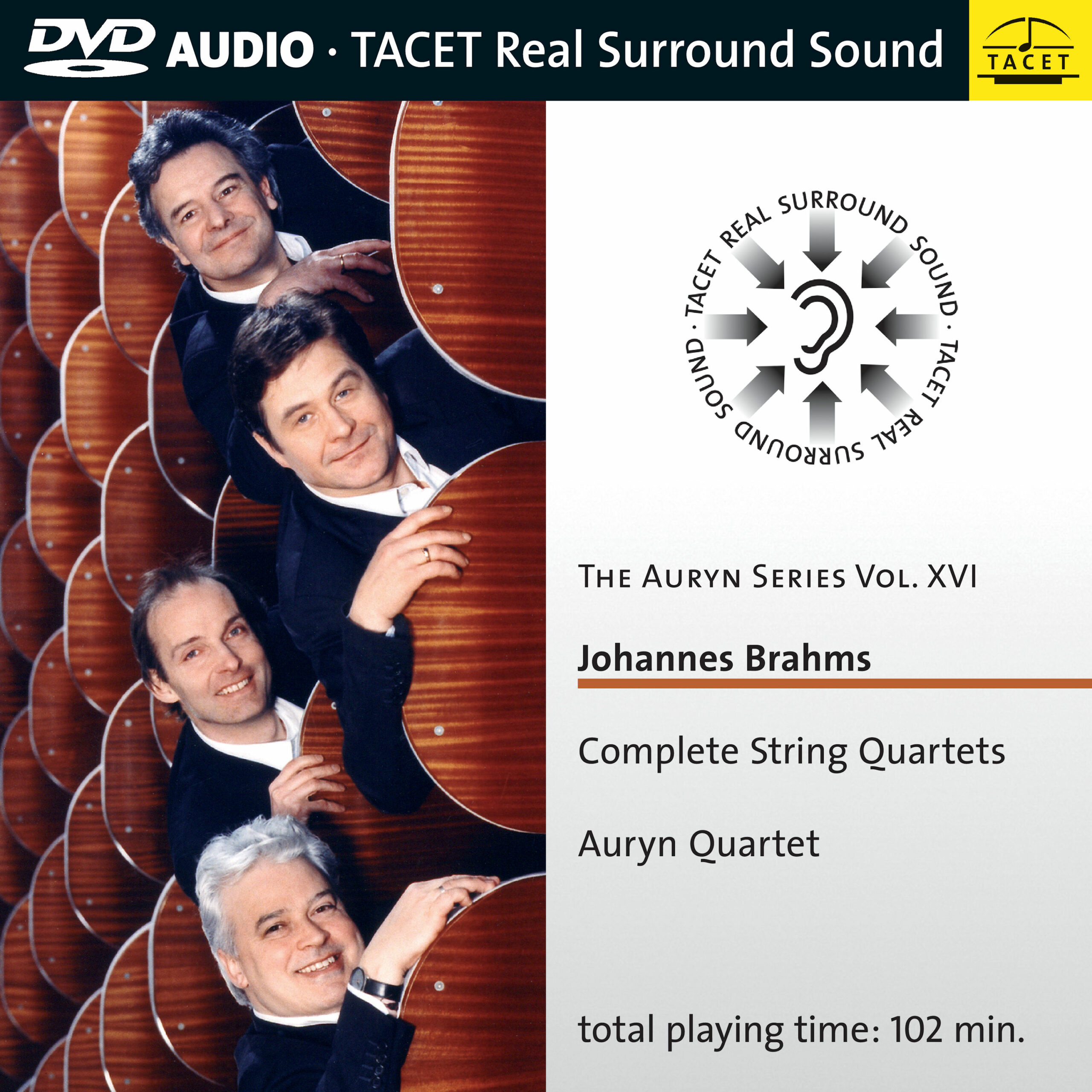

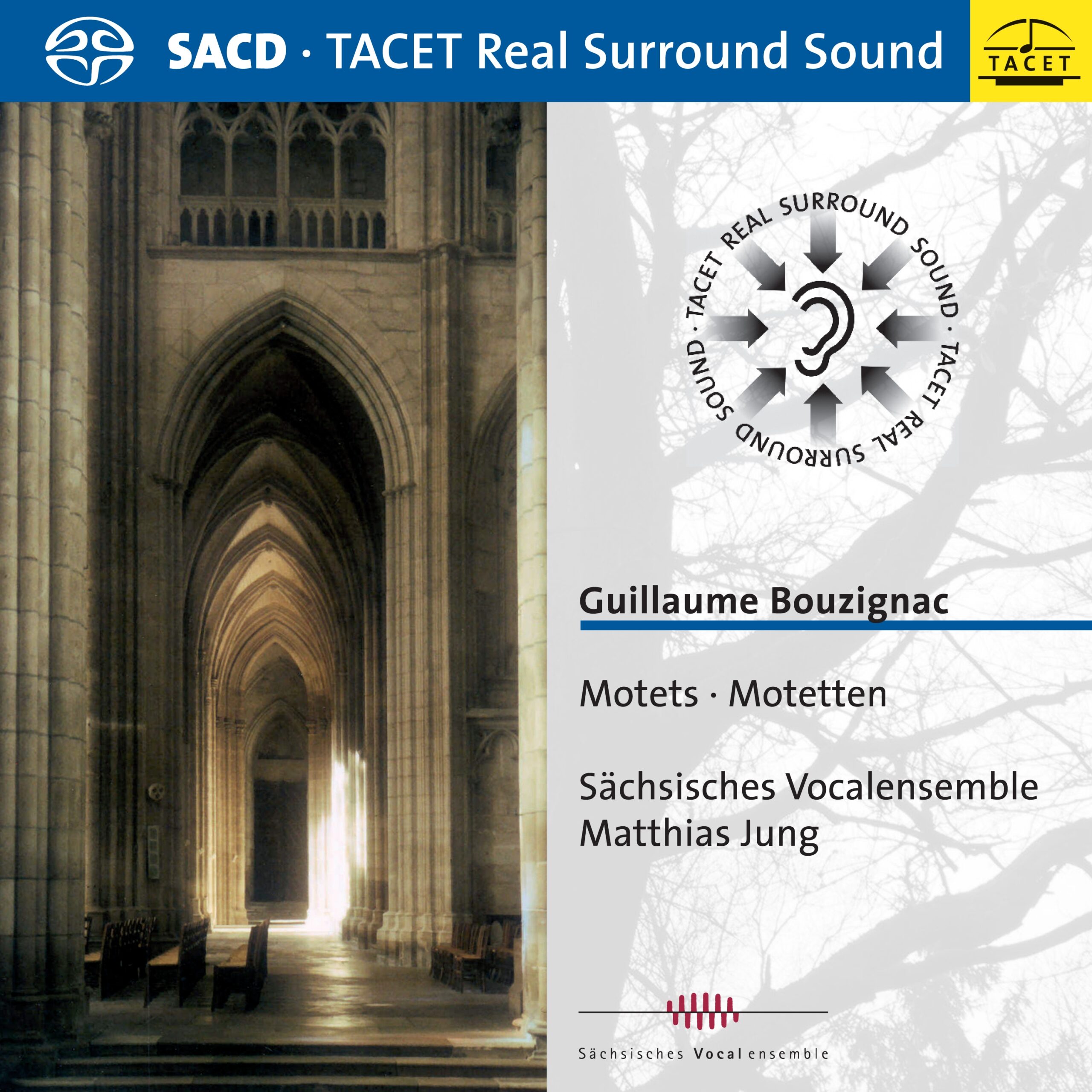
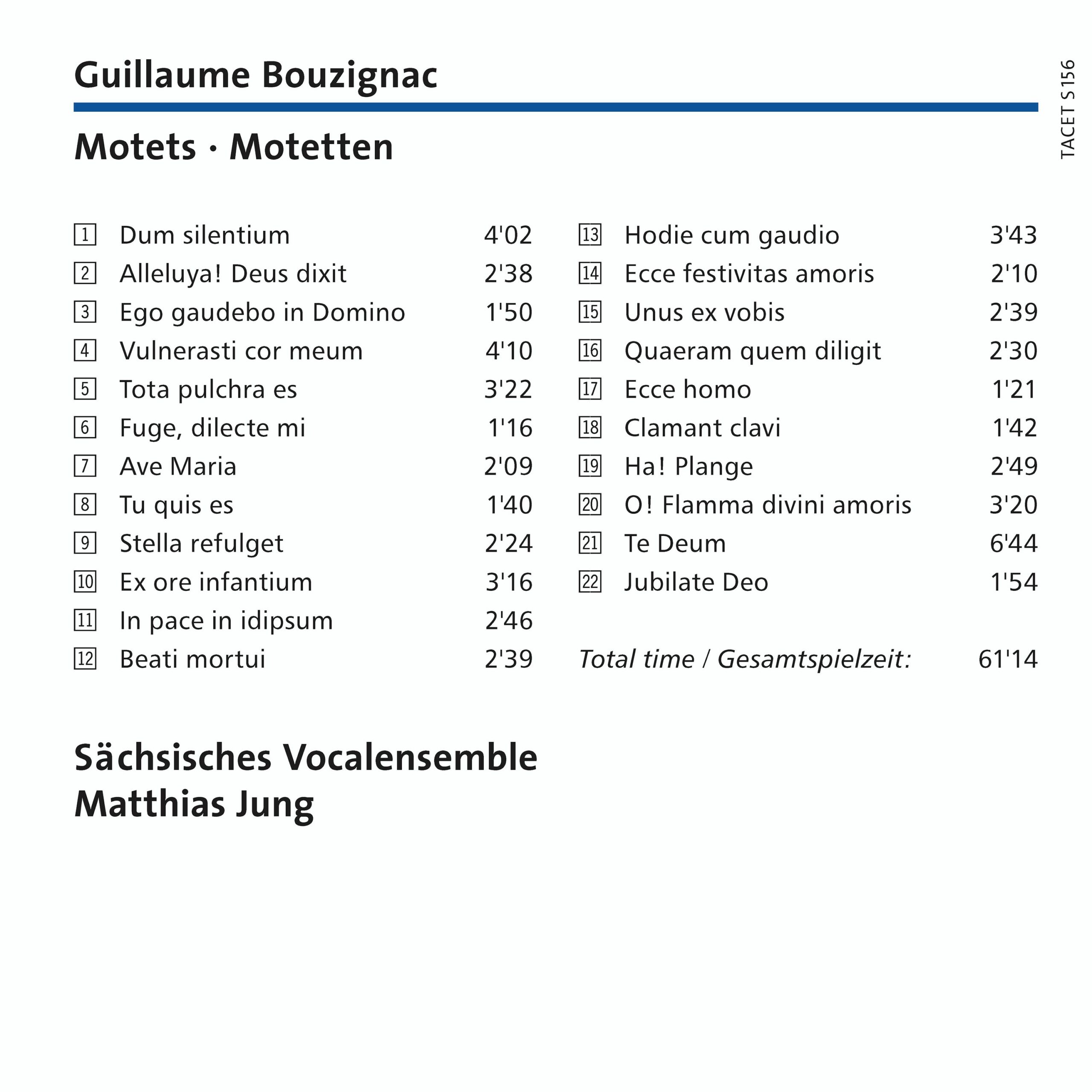

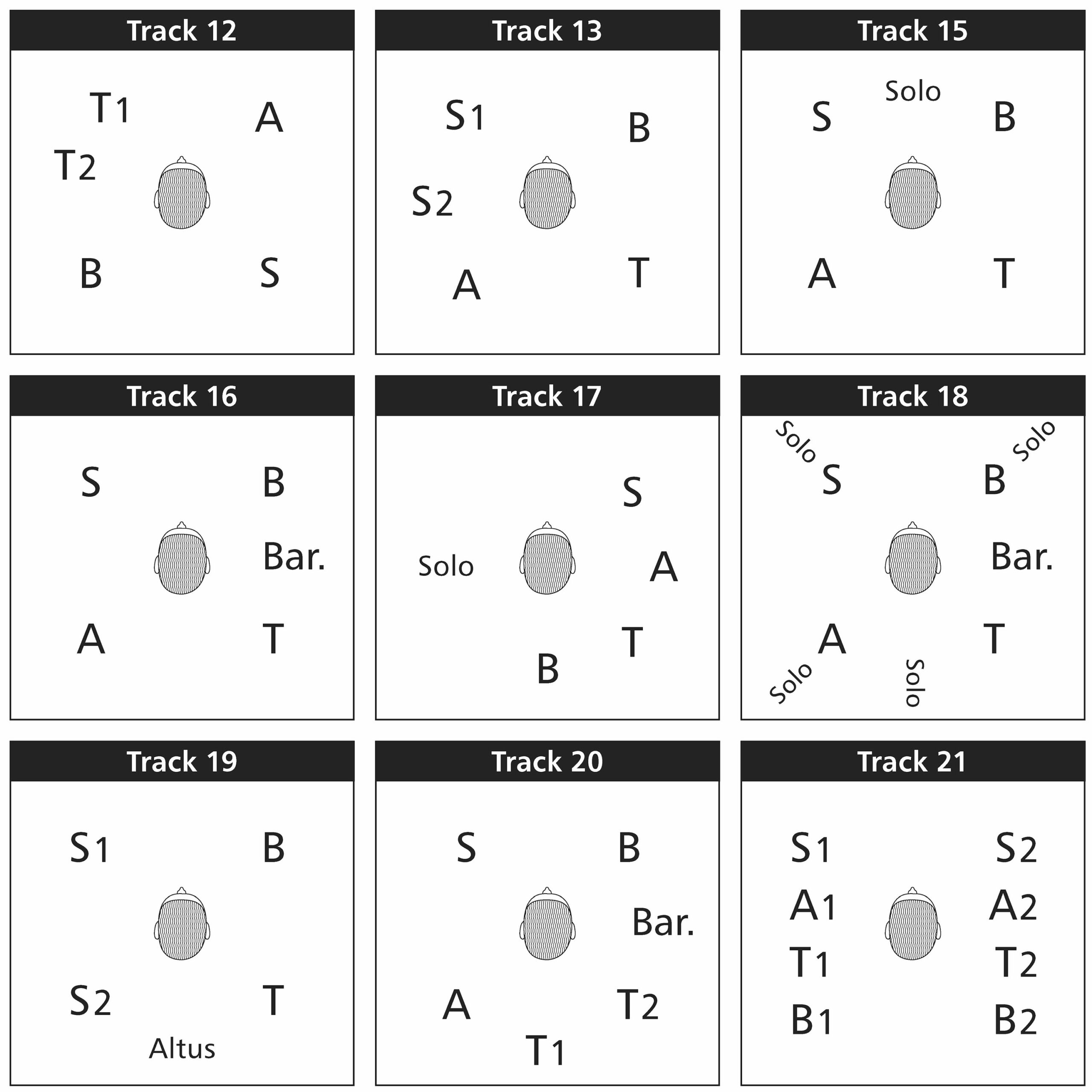
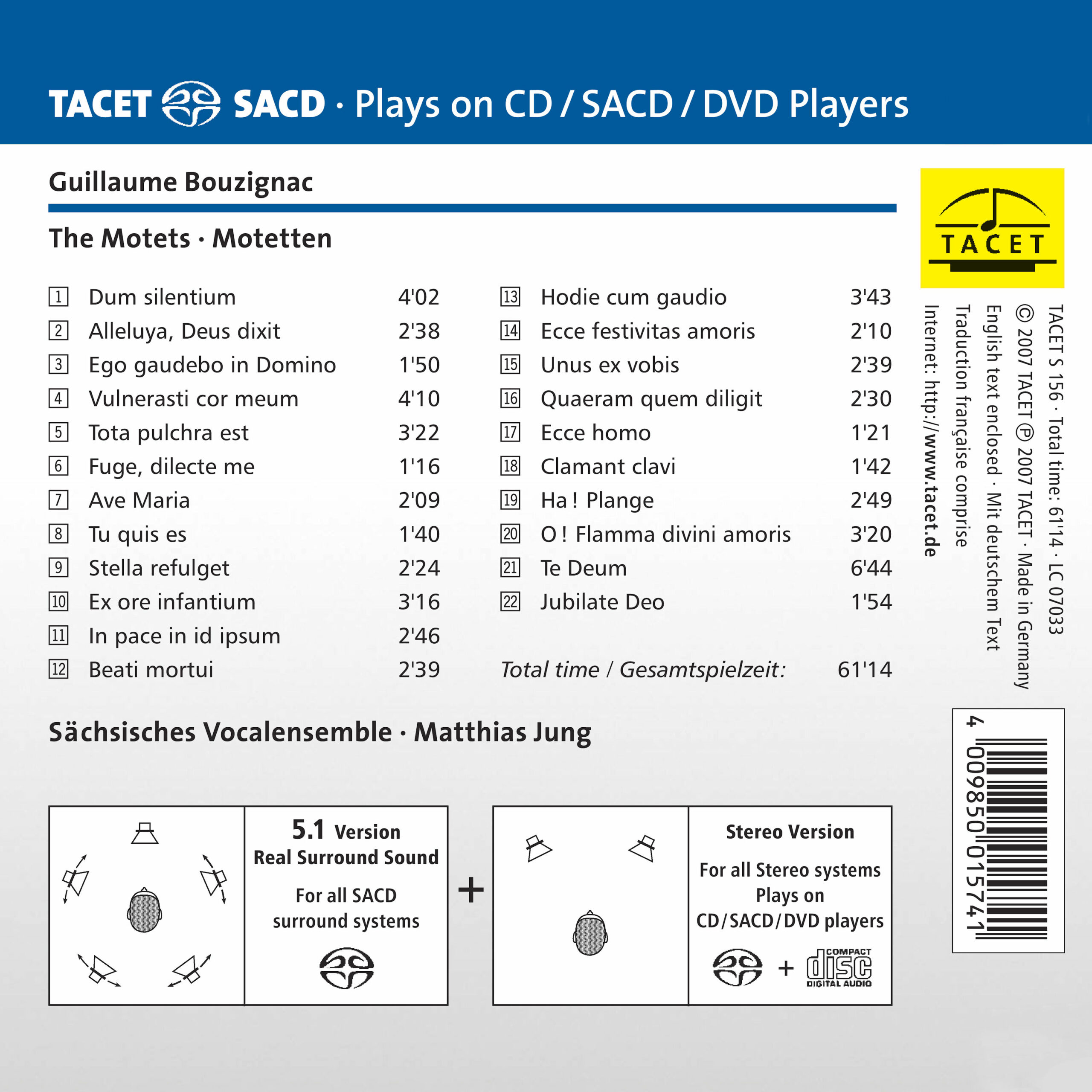
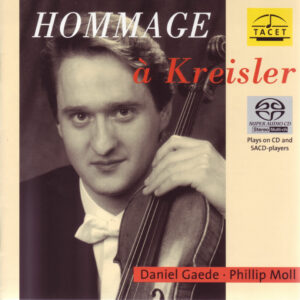


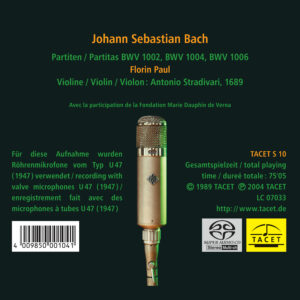
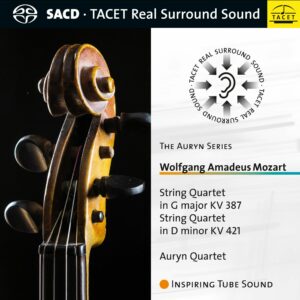
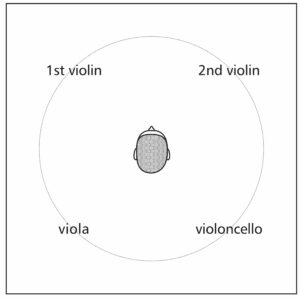
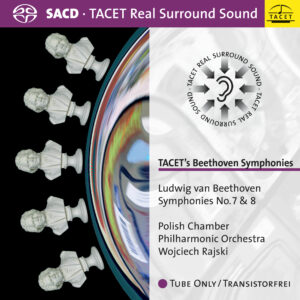
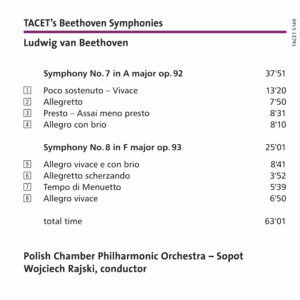
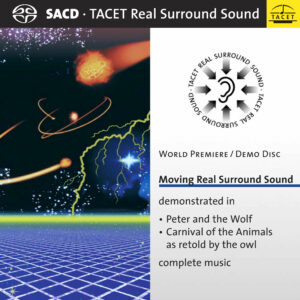
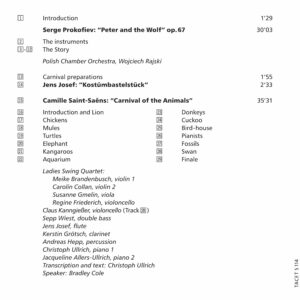
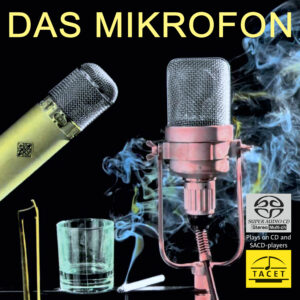

Audio Activity –
--> original review
I begin with a WOW! What a choir!
Guillaume Bouzignac lived in the first half of the XVII century in France and was Chapel Master in many French Cathedrals. He is not among the favourite authors of the record labels, so this record that contains so many nice recordings is really welcome. The counterpoint game is of good quality, the originality of the author and his mastery too. His compositions are permeated of that virtuosism that is typical of the age of Louis XIV. He makes also the spiritual material spectacular.
On the other side, to understand the musical climate of the time, it is enough to think about the two most famous Te Deum, that by Charpentier and that by Lully. Magnificence and beauty were at the heart of everything at that time, in France.
The choir here expresses at best the spirit of each piece, the mottetto Ego Gaudebo Domino is really jolly, happy; it recalls to mind the gushes of the fountains in Versailles; or the Jiubilate Deo that ends the CD. When there are notes that must be kept high, in the Vulnerasti Cor Meum for example, the choir is perfect and has no yielding.
I referred before to the Te Deum by Charpentier and Lully, also in this Cd there is a mottetto on the Te Deum but the composition here is more liturgic if compared to what is offered by the two Court musicians. It is apt to be sang in church without a music accompaniment, all the compositions are sang “a cappella” in fact.
This is a repertoire that is easy and can be enjoyed also by all those that are not used to listening to this kind of music.
The Choir is excellent. They are all very skillful and the sopranos have a high pitched voice that is always perfect in intonation and has a beautiful sonority.
The director is Matthias Jung. He knows how to motivate the choir that gets this joy across the listener. The favourite voice are very beautiful.
The recording is great, it gives a beautiful Cathedral effect that is pleasant and important. The timbre is accurate, the soundstage is large and the listener is taken in front of the choir without screens.
Domenico Pizzamiglio
Jean-Marc’s Multi-Channel Recordings Reviews –
--> original review
(...) I will repeat that I think multi-channel music is definitively under-represented these days, and I try to compensate in my own small way.
So I start with this choir recording, all the music is a capella (which means voices only, no instrumental accompaniment). The sound take is glorious but of course this is exactly what anybody buying a TACET multichannel recording should expect. There is a strong sense that we are in a church (not a cathedral but a large space). The recording was made at the Michaeliskirche of Bautzen constructed in 1429. This impression of space is also vivid between the singers themselves. For example one soloist may be in front relatively close, and other supporting voices are behind and also further away (e.g. feeling like they are about 30 feet behind).
The virtuoso tonmeister Andreas Spreer has the (very interesting) habit of applying a non-conventional sonic distribution to its recordings to try to enhance the musical message. Here the booklet contains a series of drawings that explains the presentation which is different in nearly each of the 22 pieces present on this SACD. So for example on one track two equal half of the chorus answer each other one on the left side, one on the right side to create an antiphonal effect probably (I hope) desired by the composer. In other track one or several soloists are put in evidence.
Generally 4 channels are used (e.g. 4.0) except for track 1,7,9,15 which are in 5.0. For these the soloist is in the center channel except for track 9 where it is the opposite and the soloist is far in the back.
For this kind of recordings it is a bit useless to talk about dynamics and balance of the frequency spread. But I can talk about the beauty of the sound. From the beginning to the end of this SACD the chorus sound is superb, the voices are rich and we hear clearly the different musical lines. But like other TACET recordings the spatial dispersion does not mean that the cohesion of the ensemble is lost. When the singers unite in magnificent chords I had shivers down my spine for such magnificent and glorious music. The technical marvel of this recording makes us really enjoy the superb work of the chorus.
Musical Content:
The text is in latin and translated in German (e.g. no English, or in my case no French either :-)). The booklet gives useful information about Guillaume Bouzignac born around 1587 and died around 1643. He was forgotten for nearly 300 years before some of his manuscripts were re-discovered in a Library in Tours. He lived in the center of France all his life and was not really related to court music centered in Paris. But because of this, his own style was reflecting his local culture and an occitan touch (although by this time France was already pretty centralized). The motets presented here are from different periods in Bouzignac's life (from 1610 to 1643).
As I explained before the booklet is also fun for its multiple diagrams that explains the positioning of the different voices in each track. Also all members of the choirs are listed, and which are soloist on the various tracks (I always appreciate to see the musician names and not only the conductor). The vocal ensemble is made of 8 sopranos, 7 altos, 7 tenors and 8 bass. This music is a nice remedy after a stressful day at the office.
Before annotating some of the 22 tracks on this album, I have to underline the technical excellence of the choir. There is a fabulous sense of precision from the choir, in particular on the long notes were the pitch is stable and true (no wabbling, large vibratos or fuziness on the attacks). In fact on long chords there is an effect of voices re-enforcing each other and it sometimes sound like the choir is a single large instrument ( a bit like an organ) resonating in a beautiful old church.
Jean-Marc Serre
Fanfare-Magazin –
Guillaume Bouzignac (c. 1590–c. 1643) was rescued from oblivion early in the last century when Henri Quittard discovered a manuscript of his unpublished works in Paris and another in Tours, where he lived briefly during his final years. A native of Languedoc whose vital dates have not been determined, he may have traveled to Italy where he became aware of the latest developments in Italian music around the turn of the century, a fact that influenced his avant-garde style. While he composed some songs (represented only by three examples on the Audivis disc cited below), the church music on this disc is more typical of his output.
His discography began on an early Erato choral anthology that included Jubilate Deo (heard here), but the important issues came on Arion, recorded in 1982 (CD in 10:3); Audivis, issued in 1986 (10:4); and Harmonia Mundi, recorded in 1993 (17:5). All involved Olivier Schneebeli as director, even if on the last he simply supplied the boys’ choir that participated in William Christie’s disc. All three issues have disappeared from the French Diapason Catalogue Classique, leaving only a few pieces on two newer discs.
The new issue is one of the few recordings to originate outside of France. Jung’s predecessors include Roger Norrington and Joel Cohen, while Gottfried Wolters contributed an early example from Germany, the same Jubilate Deo, in 1961. Unlike the three main CDs, this new disc uses no instruments, and the result is enhanced by the bright voices and the brilliant engineering in especially effective surround sound. Schneebeli felt that the practice of basso continuo and instrumental accompaniment of the vocal lines was well established in the composer’s time but not always notated, accounting for their use in all three discs cited. Jung finds sufficiency in the composer’s choice of scoring, setting small and large choirs in dialogue or solo and choral voices to the same effect, resulting in a combination of Renaissance sound and 17th-century vocal effects.
Jung offers only one unrecorded motet, Beati mortui, among the 22 selections. All the rest, including the pieces most familiar on records, are included in the three major collections already. But the performances here are stunning, well worth comparing with the older ones. Apart from one bass soloist who has a German accent, the Latin is always enunciated beautifully. This is an adult mixed ensemble, but the female soloists have a piercing white sound typical of boys who sing the repertoire, a very attractive quality. Vulnerasti cor meum ends with a touching morendo effect, but there are many other felicities among these 22 motets.
This is the first hybrid disc I’ve seen that has, in addition to the SACD version, a stereo version that will play on DVD as well as CD players. (If my experience is normal, the fact that the only DVD-A disc I’ve reviewed was also playable as SACD bodes ill for the long-term survival of the DVD-A format.) The separation is striking, and the effect of Bouzignac’s dialogue style is greatly enhanced thereby. The booklet has diagrams showing the spatial distribution of singers for each piece. This disc is a showpiece of real surround sound (Tacet’s description), and the label is proud of its achievement here. They should be. Don’t miss it!
J. F. Weber
L′Homme Nouveau –
Guillaume Bouzignac (c. 1587 – after 1643) has been described as a musical enigma. None of his music was ever printed; it survives only in two manuscripts discovered as late as 1904. However, it is primarily his atypical style that sets him apart in the early 17th century. Inspired by Spain, he cultivated a creative force that remained distinct from the major Baroque musical trends of his time.
In the twenty or so Latin motets recorded here, Bouzignac blends themes drawn from the Holy Scriptures with contemporary events of his era. Among them are two rather unecumenical Christmas motets celebrating the capture of La Rochelle in 1628. A true director, he emphasizes dramatic effects through multifaceted dialogues between choirs and soloists.
The Saxon Vocal Ensemble, directed by Matthias Jung, delivers a stunning timbral beauty. This a cappella performance is remarkable for its balance, precision, and emotional depth. The clarity of the Latin articulation is also commendable. Finally, the technical achievement of this SACD's high-quality recording—whether in stereo or multichannel—deserves special mention.
Benoît Sénéchal
_______________________________________________
Original Review in French language:
On a qualifié Guillaume Bouzignac (v. 1587 – après 1643) d′énigme musicale. Rien de sa musique n′a été imprimé. Elle est conservée dans deux manuscrits découverts seulement en 1904. Mais c′est surtout son style atypique qui le classe à part en ce début du XVIIe siècle. Inspiré par l′Espagne, il impose une force créatrice qui reste à l′écart des grands courants musicaux baroques de l′époque. Dans la vingtaine de motets en latin enregistrés ici, Bouzignac mélange des sujets tirés des Saintes Écritures et de l′actualité de son temps. Parmi eux, deux motets de Noël fort peu œcuméniques, célébrant la prise de la Rochelle en 1628. Vrai metteur en scène, il souligne les effets dramatiques par l′arrangement de dialogues multiformes entre chœurs et solistes. L′ensemble vocal de Saxe, dirigé par Matthias Jung, est d′une beauté de timbre époustouflante. Une prouesse a cappella remarquable d′équilibre, de justesse et d′émotion. La clarté de l′articulation du latin est aussi à saluer. Soulignons enfin la prouesse technique voulue et réalisée dans la prise de son de grande qualité de ce SACD (stéréo ou multicanal).
Benoît Sénéchal
Klassik heute –
Top marks—"10 out of 10"—for artistic quality, sound quality, and overall impression.
We don't know much about Guillaume Bouzignac (1587–c. 1643), a contemporary of Heinrich Schütz. Beyond a few key dates and sparse details, his life remains shrouded in silence. Here’s what we do know: He was born in the Languedoc, a historically rich region in southern France. Bouzignac received his education at Narbonne Cathedral and later held various positions as a singer and maître de musique at several cathedrals in southern France, including Angoulême, Grenoble, Bourges, and finally Clermont-Ferrand. Bouzignac avoided contact with the French court, remaining deeply rooted in the traditions of his Occitan homeland throughout his life. Though highly esteemed by his contemporaries, his music quickly faded into obscurity after his death. It was only thanks to the discovery by French musicologist Henri Quittard in the Tours City Library at the beginning of the 20th century that his works can be heard again today. Bouzignac’s music is marked by remarkable independence and individuality, occupying a space between the Renaissance and Baroque eras. While it does without the "new" basso continuo, it surpasses the conventional church music of his French contemporaries in its emotional intensity and dramatic power.
The Sächsische Vokalensemble, directed by Matthias Jung, has now presented an exemplary selection of Bouzignac’s motets. The pieces do not follow a uniform formal principle, and the choice of texts is equally diverse, suggesting primarily non-liturgical use. Among them are excerpts from the Christmas story and the Creation narrative, as well as motets based on the Song of Songs, Passion texts, and hymns of praise like Te Deum and Jubilate Deo. Bouzignac’s motets are marked by a shift between the intricate polyphony of the late Renaissance, dialogic exchanges between soloists and choir, and powerful, homophonic blocks of rhythmic vitality—a harbinger of a new musical era. This transitional music—precisely because of its hybrid nature—lacks nothing in personal strength, much like the works of Carl Philipp Emanuel Bach a century later.
The interpretation and recording on this CD are nothing short of astonishing. Even in its standard stereo version, it delivers a fantastic listening experience. Unfortunately, the reviewer did not have access to a surround sound system to fully experience the SACD’s capabilities. Producer Andreas Spreer took meticulous care to showcase the music using the Real Surround technique, selecting unique spatial arrangements for nearly every track on the CD—each of which is detailed in the booklet. The Sächsische Vocalensemble has established itself as a world-class ensemble. Nearly four centuries after their creation, Bouzignac’s motets shine once again in all their glory: with flawless diction, impeccable intonation, and enchanting, homogeneous sonority.
Heinz Braun
sa-cd.net –
--> original review
When I first read about Tacet′s "Real Surround" technique, with separate parts of the chorus dedicated to individual loudspeakers, even I (a very liberal thinker with regard to deploying surround channels) was dubious.
However, the results in this case are simply gorgeous.
The "Real Surround" arrangement of vocal forces changes track by track, and given the substantial reverbertion (and perhaps the mixing) one always hears an ensemble sound.
The music of Bouzignac and the performance on this SACD is a revelation.
Wayne Erfling
sa-cd.net –
--> original review
As I suspect with most listeners, the name Guillaume Bouzignac is new to me. These are some of his motets (there are at least 5 more not included here but the notes are not clear on this point) and there are Chansons and Masses that also deserve a recording or two if the measure of this music is anything to go by.
Normally, when one encounters a composer after such a long absence from the platform I become suspicious as to the quality of the music - if it was any good, it would surely be commonplace now? Well, there are exceptions to every rule and this is one of them for the music is quite beautiful and entrancing. Unlike much of the music of his contemporaries, Bouzignac manages to plumb real emotional depths.
Unusually for these times, the music is radiantly sung by the Sächisches Vocalensemble under Matthias Jung with large forces: in no way is this the sort of approach that The Sixteen or The Tallis Scholars have employed to great success in this era of music. As a result, there is a greater depth of tone and dynamic range than one would normally anticipate hearing. A potential downside is that the vocal purity of just one or two singers to a part is somewhat diminished here, even though the quality of singing is high, the Sächisches Vocalensemble are not (yet) the equal of the Monteverdi Choir in this respect.
The programming has been constructed in a very clever way so that jubilant motets follow more introspective and gloomy affairs, giving a wonderful feeling of balance throughout the disc. The soloists employed are all members of the Sächisches Vocalensemble and they are of a uniformly high calibre. The programming is also ingenious in that it varies the textures from track to track - a feature that the "TACET Real Surround Sound" MCH layer exploits to full; there are no less than 18 different configurations employed! This is one of those features that those who have heard similar either love or loath - for me, in this repertoire more than others that TACET have given this treatment, this makes the textures beautifully clear and appreciate the music far more than in "plain" stereo. Gorgeous stuff!
The only complaint I can make is that there is no English or French translations of the motet texts (even on TACET′s website)…
I dearly wish for more from composer, ensemble and TACET alike - very strongly recommended indeed.
John Broggio
sa-cd.net –
--> original review
Guillaume Bouzignac (c. 1587–after 1643) remains a mysterious figure, absent from dictionaries and encyclopedias. Musicological research into his life and work is still shrouded in uncertainty, and scholars approach him with the sense of confronting a true enigma—a composer whose work was recognized in his own time. It was in the realms of the motet, chanson, and mass that Bouzignac distinguished himself with unparalleled originality and a unique style. In the twenty or so Latin motets recorded here, the French composer abandons the basso continuo in favor of a fragmented dramatism.
Hailing from Languedoc, he began his career in the cathedral choir school, where, as Gregor Hermann notes, "the city's musical cultural center offered about a dozen boys with beautiful voices lessons in reading, writing, Latin, and singing—both Gregorian chant and the polyphonic vocal repertoire."
The Saxon Vocal Ensemble, founded in 1996 and directed by Matthias Jung, delivers a stunning timbral beauty. The grace it exudes throughout these motets, at the heart of an exemplary balance, enhances the evocative power of the singing. The clarity of articulation is also commendable. But what makes this recording indispensable is the omnipresent emotion these choral pieces evoke—never waning, to our greatest delight.
Now is the time, through this high-quality SACD recording—whether in stereo or multichannel—to discover a captivating composer whose music will linger long in our memories.
Jean-Jacques Millo
_______________________
Original Review in French language:
Absent des dictionnaires et autres encyclopédies, Guillaume Bouzignac (vers 1587-et après 1643) demeure aujourd′hui encore mystérieux. Les recherches musicologiques sur sa vie et son activité restent nimbées d′approximation et c′est avec le sentiment d′être en face d′une véritable énigme que les musicologues se sont penchés sur un compositeur dont l′œuvre fut reconnue en son temps. C′est dans le domaine du motet, de la chanson et de la messe que Bouzignac s′affirma avec une originalité, un style à part. Dans la vingtaine de motets en latin enregistrée ici, le compositeur français délaisse la basse continue pour un „dramatisme“ fragmenté. Originaire du Languedoc, il débuta sa carrière à l′école de chœur de la cathédrale où, comme le souligne Gregor Hermann, „le centre culturel musical de la ville proposait à une douzaine de jeunes garçons possédant une jolie voix, des leçons de lecture et d′écriture, de latin et de chant pour le choral grégorien et le répertoire à plusieurs voix de la polyphonie vocale“. L′ensemble vocal de Saxe, fondé en 1996, placé sous la direction de Matthias Jung est d′une beauté de timbre époustouflante. La grâce qu′il dégage tout au long de ces motets, au cœur même d′un équilibre exemplaire, renforce la puissance évocatrice du chant. La clarté de l′articulation est également à saluer. Mais ce qui rend cet enregistrement incontournable, c′est l′émotion omniprésente que dégagent ces pièces chorales. Pas une seconde elle ne retombe, pour notre plus grand plaisir. Il est temps, à l′écoute de ce SACD à la prise de son de grande qualité, en stéréo ou en multicanal, de découvrir un compositeur attachant qui hantera longtemps les mémoires.
Jean-Jacques Millo
Audiophile Audition –
Unknown until now, and well worth the wait
This sumptuously recorded SACD features the music of French composer Guillaume Bouzignac (c. 1587- post 1643), born amidst the southern provinces, and fated to avoid the more fame-producing cities like Paris and others that promoted the French court. As a result, his music lay dormant until the beginning of the 20th century, and though scholars have been able to piece together only small parts of the puzzle of his life, his originality and talent stand clear.
Apparently it stood that way during most of his lifetime also. His excellent provincial education thrust him into a "singing school" in his earliest years, where those boys with good voices were applied to good teaching in Latin, reading, writing, and the other courses considered applicable to a liberal arts education of the time. His rise as a singer and music master took him to a succession of cathedrals and major music centers all over the country. But there is a question as to how "original" he was perceived to be in his time, and this, coupled with his living on the outskirts of the inner circle of "cultured" French life, may have led to his being forgotten.
The music itself is, in a word, wonderful. The melodies, avoiding the normal churchly style of the time, and seemingly incorporating what sounds like a heavily-influenced folk idiom, are tuneful and highly dramatic. His use of the chorus, from large antiphonal responses to unequally balanced ensembles, to superb solo combinations, is thrilling and highly effective. Though this music is hardly redolent of the new music that would shortly move through the continent, it has ist own definitions and standards, and an extraordinarily expressive means of communication.
Tacet has labeled this as genuine 5.1 sound, and so it seems, the surround separation like standing in the middle of an acoustically perfect cathedral. The choir is excellent, fully involved in these readings, and sing with great spirit. The booklet notes are very good, though the translations of the Latin texts into German only get an award of a half-star deduction. And if you don′t have SACD, well, this sounds great on headphones too.
Steven Ritter
Platte 11 –
Who was Guillaume Bouzignac? Born around 1587 in Languedoc, he was likely educated at the choir school of Narbonne Cathedral. He then worked as a singer and composer throughout southern France. He died after 1643. His works survive solely in manuscript form and were only rediscovered at the beginning of the 20th century through manuscript finds. Bouzignac’s uniqueness lies in the fact that he infused the artful polyphony of late Renaissance choral music with great dramatic expression.
To achieve this, Bouzignac divides the choir into groups that communicate with one another—not in the sense of the interweaving and blending of voices typical of polyphonic choral music, but quite literally, as these groups deliver the direct speech of biblical figures. In this way, he conjures up dramatic scenes with vivid dialogues. Yet he could also do the opposite: In the simple beauty of a choral piece like Beati mortui, the world seems to stand still for a moment; Tota pulchra est sounds weightless and ethereally beautiful. So, who was Guillaume Bouzignac? The Saxon Vocal Ensemble under Matthias Jung leaves us in no doubt: a genius, at least as significant as Carlo Gesualdo (1566–1613). I’ve only heard the stereo version of this multichannel SACD. But with music like this, it’s easy to imagine that the multichannel recording might come closer to Bouzignac’s own sonic vision…
Heinz Gelking
Musik an sich –
--> original review
Mit Engelzungen
The Saxon Vocal Ensemble, directed by Matthias Jung, performs 22 motets, including many previously unrecorded works.
By opting for a purely vocal ensemble, the group initially emphasizes the retrospective elements of the music, but also allows Bouzignac’s conception to be experienced with particular clarity and purity. A special highlight of this production is the changing arrangement of vocal groups from piece to piece, with the sophisticated sound direction fully unfolding its effect in surround sound. It makes you feel as if you’re right in the middle of the heavenly tumult.
Even in stereo, this sensual performance is of the highest quality, with a sound image that leaves nothing to be desired in terms of warmth and richness. The Saxon Vocal Ensemble, with its boyishly slender sopranos, sings with angelic tongues—flawless and weightless. As with Christie’s recording, the Tota pulchra est, written for high voices, is of almost unbearable beauty. The slightly faster tempos in the dialogue motets, compared to older recordings, advantageously emphasize the drama of the music. By the way, the Latin is sung in a "normal" pronunciation, not a Frenchified one ("sanctus dominus"). The accompanying text by Gregor Hermann is also excellent. (…)
Georg Henkel
Sächsische Zeitung Dresden –
Rising stars
The vocal ensemble performs masterful motets by Bouzignac on CD and in concert in Dresden.
With this surround CD, Matthias Jung and his Sächsisches Vocalensemble set a milestone—not only because of the outstanding sound. More than 13 years after Les Arts Florissants released Schneebeli’s Pages de la Chapelle, a world-class ensemble has once again engaged deeply with the little-known and enigmatic Frenchman Guillaume Bouzignac. Born around 1587, he was documented as a choirboy in Narbonne in 1604 and later served as Maître de Musique at the cathedrals of Grenoble, Rodez, and Clermont-Ferrand. Since he neither worked for the king nor was published by Ballard, the royal printing monopolist, his name soon fell into oblivion—until 1905, when a manuscript of motets was discovered in Tours. Fifty years later, more of his works surfaced in Paris. Yet specialists approached this evocative loner only hesitantly.
In einzigartiger Weise hat Bouzignac Zitate aus den Evangelien herausgelöst und zu dramatischen Gesprächen montiert. In Motetten wie „Ave Maria“ und „Dum silentium“ lässt er den Erzengel die Fragen Marias oder der Hirten beantworten. Diese berührenden Dialoge erklingen als Wechselgesang von Solisten und Chor. Typisch für Bouzignac ist auch seine Neigung zur Ritornellform. Echohaft umschmiegen einander in „Tota pulchra es“ die sich variiert wiederholenden Zeilen für drei Soprane und ein Alt. Das ist von überirdischer Anmut, vor allem wenn es von so reinen Stimmen, so silbrig, luftig und klar dargeboten wird wie hier. Und das bedeutet es ja auch: „Vollkommen schön bist du“.
Shivers of bliss
It is already an experience in two-channel stereo, which the SACD produced by the audiophile label TACET offers when played on a standard CD player. But in five-channel sound over a surround system, this recording from the Michaeliskirche in Bautzen from the very first moment sends shivers of bliss and excitement—it feels as though we are seated among the angels, and beneath them!
Wenn am Sonntag in Dresdens Dreikönigkirche Solistin Dorothea Wagner und ihr 1996 gegründeter Chor das himmlische „Stella refulgit“ anstimmen und der „Stern erstrahlt“ und Sie meinen, das so noch nie erlebt zu haben – seien Sie versichert: Sie täuschen sich nicht! Denn diesen Stern Bouzignacs haben Matthias Jungs 30 Sänger ganz neu aufgehen lassen.
Jens-Uwe Sommerschuh
Sächsische Zeitung Dresden –
This is not simply a discovery, but truly a grand celebration for the ears: under the direction of Matthias Jung, the Sächsisches Vocalensemble has recorded motets by the little-known French composer Guillaume Bouzignac (1587–1643) in Bautzen’s Michaeliskirche. On July 1, a concert in Dresden’s Dreikönigskirche will follow the release of the CD. And this recording indeed deserves such a festive concert. Brilliantly interpreted, the motets unfold a radiance that intoxicates and instantly captivates.
Conclusion: Simply magnificent.
(SZ/ada)